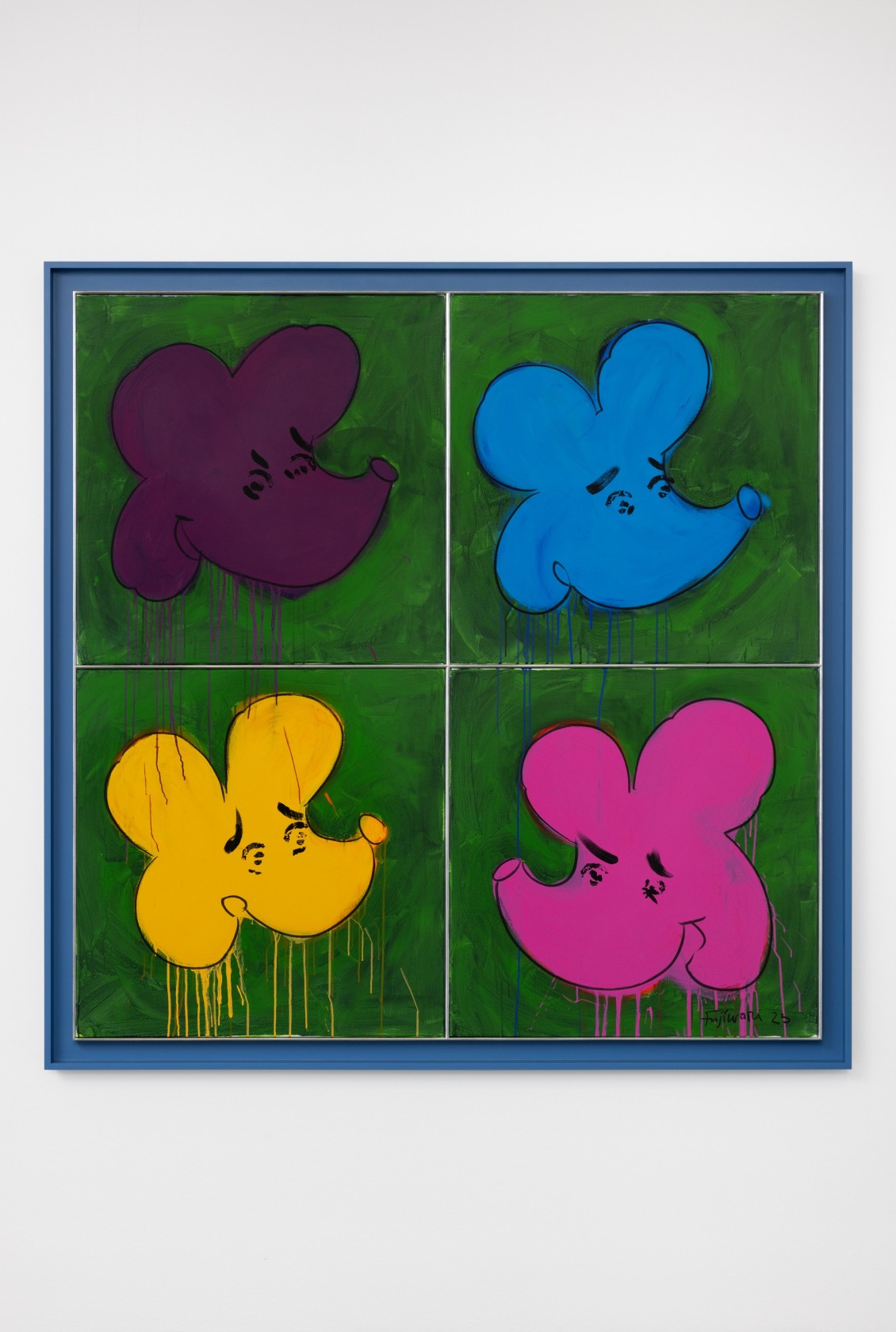Simon Fujiwara Who are the Flowers? (Q4), 2023
Acrylic and charcoal on canvas
85 x 85 x 2,5 cm (each, 4 parts) (unframed)
170 x 170 cm (overall) (unframed)
185,8 x 185,8 x 6,1 cm
Simon Fujiwara’s Who are the Flowers? belongs to a series of works recreating iconic art works by historically significant artists through the perspective of his original cartoon figure Who the Bær.
Fujiwara reimagines Andy Warhol's famous flower motif in the likeness of his figure, Who the Bær. Presented against a painterly background, Fujiwara renders the flowers as brightly colored heads—featured as single, in pairs or groups of four—from which drips of paint run.
Warhol’s flower paintings, created between 1964 and 1965, were initially inspired by a photograph of several hibiscus flowers taken by Patricia Caulfield, then the executive editor of Modern Photography magazine. (The photographer unsuccessfully sued Warhol in 1966 for copyright infringement.) The magazine's foldout article depicted how a new Kodak home color processing system could manipulate color.
Warhol appropriated the image, cropped, copied, enhanced the contrast, and eventually settled on a square format that meant the paintings could be viewed from any orientation. A large collection of these paintings was the focus of Warhol’s first exhibition at the Leo Castelli Gallery in late 1964.
The appropriated flower motif was a major departure for Warhol whose series taking images of car crashes, electric chairs, known as his Death and Disaster Series, or of the grieving Jackie Kennedy, were open for more narrative and also darker readings. As Heiner Bastian noted in 2002, "The flower pictures were for Everyman, they embodied Warhol's power of concretization, the shortest possible route to stylization, both open to psychological interpretation and an ephemeral symbol.”
For Simon Fujiwara, the very emptiness of the motif—a lack of context and meaning produced by the endless circulation of Warhol's flowers as image—makes it a perfect match for his character Who the Baer, who themselves is an image searching for meaning. On the surface Warhol's flowers are the most accessible of the Pop artist's highly commodified works. At the same time, they also became an uncontroversial symbol both for Pop art as a whole and for the political climate of the 1960s and the so-called flower generation.
